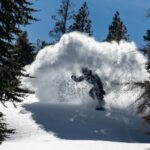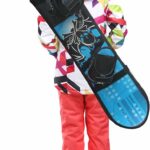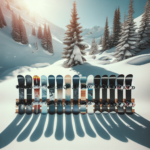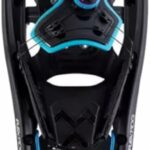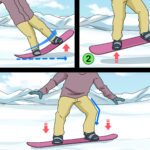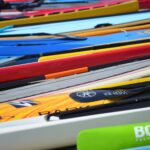You’ve made the thrilling decision to venture into the world of snowboarding, ready to experience the rush of cutting through fresh powder on the slopes. Your first hurdle? Picking out the best snowboard that corresponds with your needs and ability as a rookie. In this article “What Snowboard Should I Buy Beginner?”, you’ll explore a range of crucial factors that contribute to making this crucial choice – from the different snowboard styles and lengths to the distinct board shapes and flex ratings. While it may seem like a lot to consider, you’ll soon realize that each detail plays a significant role in your overall snowboarding experience. Above all, by the end of this piece, you’ll be equipped with all the necessary information to make an informed decision and find the perfect snowboard that will enhance your journey into this electrifying sport.
Understanding the Basics of Snowboarding
Snowboarding, a winter sport that merges elements of surfing, skateboarding and skiing, is exhilarating, fun and incredibly rewarding once you get the hang of it. But before you hit the slopes, it’s essential to comprehend a few basic elements, particularly regarding the gear you use.
The Importance of Choosing the Right Snowboard
Choosing the right snowboard is one of the most vital decisions you’ll make, especially as a beginner. A snowboard is your direct line of contact with the snow and, as such, greatly influences your riding experience. The right snowboard can aid in mastering techniques quicker, while the wrong one can dampen your snowboarding experience.
The Different Types of Snowboarding Styles
Broadly speaking, there are three primary styles of snowboarding: freeriding, freestyle, and Alpine. Freeriding is all about the adventure, off-piste and interacting with the natural terrain. Freestyle is essentially skateboarding on snow, complete with tricks, jumps, and rails. Alpine snowboarding is largely similar to skiing – it’s all about speed and turns on groomed trails. As a beginner, you might not know your style yet, but you will as you gain more experience.
The Central Role of the Snowboard in Snowboarding
Your snowboard is fundamental to snowboarding. It’s the heart and soul of the sport. Not only does it enable you to glide smoothly down snowy slopes, but it’s also your tool for turning, stopping, jumping and exploring the mountain. Choosing the right snowboard will help you learn faster and enjoy every second on the slopes.
Factors to Consider when Buying a Beginner’s Snowboard
Buying your first snowboard is an exciting experience, but there are several factors you should consider to ensure you make the right choice.
Snowboard Size: Length and Width
Snowboard size, comprising both length and width, is highly influential on performance. A longer board is quicker and more stable but can be hard to turn, while a shorter board is more maneuverable but less stable at high speeds. The board width should be enough for your boot to sit on the snowboard without overhanging excessively.
Rider’s Skill Level: Beginner, Intermediate, Expert
Snowboards are designed with different skill levels in mind. As a beginner, you’ll want a board that’s forgiving, flexible, and easy to turn. Intermediate boards offer more control and speed, while expert boards are stiff, narrow, and designed for maximum performance.
Rider’s Physical Attributes: Weight, Height and Foot Size
Your weight, height, and foot size also contribute to the type of board you should choose. Heavier riders might need a longer board for appropriate support, and taller riders might opt for a longer board for stability. Your foot size informs the board’s width that works best for you.
Riding Style: Freestyle, Freeride, All Mountain
Your preferred riding style will significantly affect your snowboard choice. If you’re into freestyle, you’ll benefit from shorter, maneuverable boards. If freeride is your thing, consider stiffer, longer boards for speed and control. All-mountain riders should look for versatile boards that can handle a bit of everything.
Snow Conditions and Terrain Preferences
The type of conditions and terrain you ride on can dictate the appropriate snowboard type. Softer boards are excellent on groomed runs and park riding, while stiffer boards are ideal for deep snow and challenging terrains.
Type of Snowboards Suitable for Beginners
As a beginner, you want a board that’s forgiving, easy to control, and helps you master basic skills. Here are some options to consider:
All-Mountain Snowboards
All-mountain snowboards are the most versatile, designed to handle any terrain or conditions. As a beginner, this type is an excellent choice, allowing you to try out different styles until you find your preference.
Freestyle Snowboards
Freestyle snowboards are lightweight, short, and easy to maneuver. They are great for beginners who aim to master tricks sooner rather than later. But remember, they’re not the best for high speed or challenging terrains.
Freeride Snowboards
Although freeride snowboards are better suited to advanced riders due to their design for off-piste and challenging terrains, they can still be an option for adventurous beginners committed to rapid progression.
Powder Snowboards
Powder snowboards are designed for deep snow. They are typically wider and longer with a unique shape for better flotation. As a beginner, you might not need a powder board immediately, but it’s an option once you start exploring powder snow.
Common Snowboard Construction Types
Snowboarding technology has come a long way, and another critical thing to consider is the board’s construction type. Here’s a quick rundown:
Camber
Camber boards have a slight upward curve in the middle with contact points close to the ends. This design provides excellent control, stability and edge hold, making it perfect for hard-packed snow.
Rocker
Rocker boards, oppositely, curve upwards from the middle towards both ends, similar to a rocking chair. This design makes them exceptional in powder and for beginners because it reduces the chance of catching an edge.
Flat
Flat boards are just as they sound – flat from tip to tail. These boards provide a stable and predictable ride, perfect for beginners still learning to balance and maneuver on snow.
Hybrid
Hybrid boards mix the best features of camber, rocker, and flat designs. They offer versatility and are a great choice if you want to try different styles of riding.
Snowboard Shapes
Snowboard shapes inform how a board performs in specific conditions and how it reacts to rider input.
Directional Shape
Directional boards are designed to be ridden primarily in one direction and are best for high-speed carving and stability.
True Twin Shape
True twin boards are perfectly symmetrical and perform identically forward or backward, making them ideal for freestyle riders.
Directional Twin Shape
These boards mix features of both directional and twin boards, offering versatility for those who like the mountain but still want to dabble in freestyle riding.
Asymmetrical Shape
Asymmetrical boards have a different sidecut radius on the heel edge compared to the toe edge, promote easier and more anatomically correct turns.
Understanding Snowboard Flex
Flex refers to the board’s stiffness and plays a significant role in how the snowboard performs.
Snowboard Flex Ratings
Most manufacturers rate the flex of their boards from soft to stiff. Soft-flexing boards are more forgiving and easier to turn, making them a great choice for beginners. Stiff boards, conversely, offer more stability at high speeds but require more power to turn.
Importance of Flex in Beginner Snowboards
As a beginner, you’ll want a soft to medium flex in your snowboard. This flex rating offers forgiveness when you make errors and provides an easier learning curve when starting.
Choosing the Right Snowboard Bindings
Bindings are an essential link between you and your snowboard, determining the level of control and comfort you have.
Flexibility and Comfort
You should match the flex of your bindings to the flex of your snowboard and boots for a balanced setup. More flexible bindings offer comfort and are usually easier for beginners.
Size and Compatibility with Snowboard and Boots
Your bindings should be the right size for your boots and compatible with your snowboard’s binding mounting system. Always check compatibility and sizing charts before purchasing.
Types of Snowboard Bindings: Strap-in, Rear-entry, Step-on
Strap-in bindings offer excellent control and are most common. Rear-entry bindings allow easy and fast boot-entry, while step-on bindings provide convenience but may compromise on performance.
Choosing the Right Snowboard Boots
Your boots provide comfort and direct control over your snowboard, making snowboarding enjoyable, or a nightmare.
Size and Fit
Your snowboard boots should be snug without causing discomfort. Consider trying on several pairs to find the perfect fit and always wear your snowboarding socks when trying them on!
Flexibility and Comfort
Just like your snowboard and bindings, boots come in varying flex ratings. Beginners generally benefit from softer boots for comfort and a gentler learning curve.
Lacing Systems: Traditional, Quick-pull, Boa
Lacing systems on boots vary from traditional laces to quick-pull handles and Boa systems. Think about what you find most convenient and prioritize that when selecting a boot.
Compatibility with Bindings and Snowboard
Again, like bindings, boots must be compatible with your binding system. Keep this in mind when shopping for your snowboarding gear.
Price and Quality Considerations
Snowboarding can be an expensive sport, but don’t fall into the trap of buying the cheapest gear you can find.
Why Quality Matters
As a beginner, quality gear can lead to a positive learning experience. Quality snowboarding gear will last longer and perform better, leading to more fun times on the slope.
Understanding Price Ranges
Snowboarding gear comes in a wide range of prices. From budget-friendly options to top-of-the-range equipment, there’s something for everyone. Remember, the most expensive isn’t always the best for beginners.
Looking for Sale and Discount Opportunities
Keep an eye out for sales and discounts to score quality gear at lower prices. End-of-season sales often bring amazing deals on excellent gear.
Recommended Snowboards for Beginners
Choosing the right beginner snowboard can be a daunting task given the many brands and models available. Ultimately, choosing a board that matches your physique, skills, style, and budget is essential.
Reviews of Top Snowboard Brands for Beginners
Some of the well-respected brands that offer quality beginner boards include Burton, Salomon, K2, and Rossignol. These brands have been in the game for a long time and are known for their beginner-friendly boards.
Snowboard Models Fit for Beginners
Models like the Burton Ripcord and Salomon Sight are specifically designed for beginners, offering a smooth, enjoyable ride while you learn the ropes.
Now that you’re armed with this knowledge, finding the perfect beginner snowboard should be a breeze. Remember, everyone advances at their own pace. Be patient, keep exploring, and have fun on your snowboarding journey!
- What Snowboard Bindings Should I Get? - January 23, 2024
- What Size Screws For Snowboard Bindings? - January 23, 2024
- How To Snowmobile On Water? - January 23, 2024

